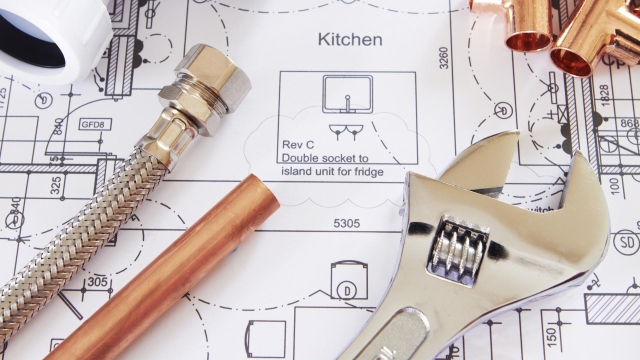
When it comes to the everyday workings of our homes and buildings, there is often one intricate system that goes unnoticed, yet is indispensable to our modern way of life: plumbing. While plumbing may not be the most glamorous topic, it plays a vital role in ensuring our comfort and convenience, allowing water to flow seamlessly to our faucets, toilets, and appliances. From the moment we turn on the tap to the flush of a toilet, we rely on the complex network of pipes hidden behind walls to deliver water and whisk away waste. But beneath the surface lies a captivating world, where passion and precision combine to create a seamless flow of liquid necessity.
Plumbing is an art that blends the mastery of engineering with a deep understanding of water dynamics. From the selection and installation of pipes to the intricate web of valves, connectors, and fixtures, plumbers are the unsung heroes who ensure our water systems operate smoothly and efficiently. It requires a keen eye for detail, precise measurements, and a firm grasp of physics to design and install a plumbing system that can withstand the test of time.
Yet plumbing is more than just a technical craft; it is a testament to human ingenuity and adaptability. Throughout history, civilizations have developed various forms of plumbing, each with its own unique advancements and challenges. From the ancient Romans’ ingenious aqueducts to the innovative plumbing systems of the modern era, it is evident that our ability to harness and control water has shaped the course of human development.
In the following pages, we will embark on a journey to uncover the intricacies of plumbing – exploring its history, the science behind it, the challenges faced by plumbers, and the evolving technologies that continue to revolutionize the industry. Join us as we dive into the world of pipes and passions, peeling back the layers to reveal the fascinating craftsmanship and the unsung heroes who bring us the invaluable gift of running water.
A Brief History of Plumbing
Plumbing, an essential aspect of our modern lives, has a rich and fascinating history. From its humble beginnings to the intricate systems we rely on today, plumbing has undergone remarkable transformations throughout the centuries.
Ancient Origins:
Plumbing can be traced back to ancient civilizations such as the Egyptians, Greeks, and Romans. In these societies, basic plumbing systems were developed to provide clean water and remove waste. Channels and pipes made from clay, stone, and even lead were used to transport water for household use, irrigation, and public baths.Middle Ages and Renaissance:
During the Middle Ages, plumbing technology saw a decline as many Roman infrastructure projects fell into disrepair. However, the Renaissance brought about a renewed focus on plumbing advancements. In Europe, wooden pipes and rudimentary sewage systems made a comeback, improving public health and sanitation.
24 Hour Austin Area PlumberModern Plumbing:
The Industrial Revolution brought significant advancements in plumbing technology. With the invention of cast iron and galvanized steel pipes, plumbing systems became more robust and efficient. Water distribution systems were established, allowing for the supply of clean water to homes, factories, and cities. Alongside improved waste disposal techniques, modern plumbing played a vital role in urban development and public health.
Throughout its history, plumbing has evolved from simple clay pipes to intricate networks of pipes, valves, and fixtures. Today, we rely on plumbing to provide us with clean water, dispose of waste, and maintain the overall well-being of our communities. The intricacies of plumbing may often go unnoticed, but its significance is undeniable.
The Science Behind Plumbing Systems
Plumbing is an essential aspect of our daily lives, allowing for the efficient transportation of water and the removal of waste. Behind this intricate network of pipes and fixtures lies a fascinating science that ensures our homes and buildings have a reliable supply of clean water and effective drainage.
At the core of plumbing systems is the principle of fluid mechanics. This branch of science studies the behavior of fluids, such as water, in various conditions and environments. Understanding fluid dynamics is crucial in designing plumbing systems that operate with maximum efficiency, ensuring adequate water pressure and flow throughout the system.
One fundamental concept in plumbing science is the principle of pressure. Water naturally flows from areas of high pressure to low pressure, and plumbing systems are designed to leverage this principle. By establishing a network of pipes that gradually reduce in diameter, water flow can be controlled and maintained at optimal levels, ensuring consistent performance across all fixtures within a building.
Temperature control is another critical aspect of plumbing science. The ability to have hot water instantly available and at a desired temperature is made possible through the implementation of thoughtful plumbing design and technology. By incorporating devices such as water heaters, heat exchangers, and thermostatic mixing valves into plumbing systems, precise control over water temperature can be achieved, meeting the demands of various applications, from washing dishes to taking a relaxing shower.
In conclusion, plumbing systems are not just a haphazard collection of pipes and fixtures but rather a meticulously designed network based on scientific principles. The science behind plumbing systems encompasses fluid mechanics, pressure control, and temperature regulation, all working together to provide us with the modern comforts we often take for granted. Plumbing truly is a remarkable and intricate field that plays a significant role in our daily lives.
Modern Innovations in Plumbing Technology
Plumbing technology has come a long way over the years, with modern innovations revolutionizing the way we manage water systems and ensure efficient plumbing in our homes and buildings. From smart devices to eco-friendly solutions, here are some of the exciting advancements in plumbing technology.
Smart Water Monitoring Systems: With the advent of smart technology, we now have the capability to monitor our water usage in real time. Smart water monitoring systems provide valuable insights into our water consumption patterns, helping us identify leaks, conserve water, and ultimately save on utility bills. These systems utilize sensors and data analytics to track water usage and provide detailed reports via mobile applications that are easily accessible and user-friendly.
Water-Efficient Fixtures: In the pursuit of sustainability, water-efficient fixtures have emerged as a key innovation in plumbing technology. High-efficiency toilets, low-flow faucets, and showerheads with reduced water consumption have become increasingly popular choices for homeowners and businesses alike. These fixtures not only help conserve water but also contribute to significant cost savings in the long run.
Water Purification Systems: Another important innovation in plumbing technology is the development of advanced water purification systems. These systems use cutting-edge filtration techniques to remove impurities, contaminants, and chemicals from our water supply, ensuring that we have clean and safe drinking water. From reverse osmosis to ultraviolet sterilization, these systems provide an added layer of protection and peace of mind.
In conclusion, modern plumbing technology has brought about remarkable advancements that enhance our water management, promote sustainability, and improve overall efficiency. From smart water monitoring systems to water-efficient fixtures and advanced water purification systems, these innovations are reshaping the plumbing industry and creating a more sustainable future for us all.



